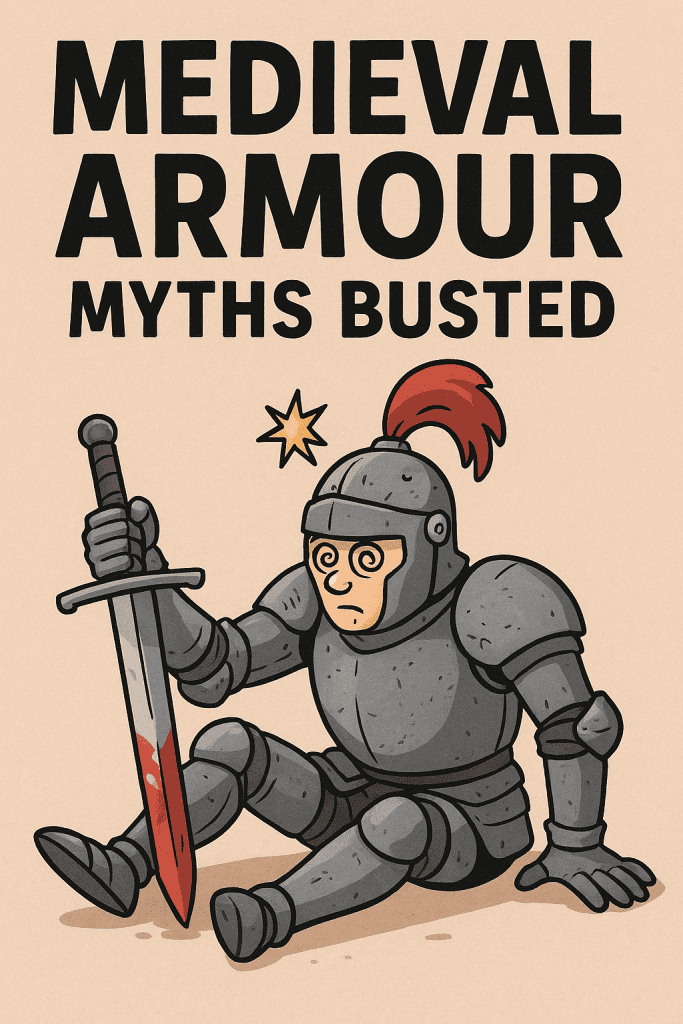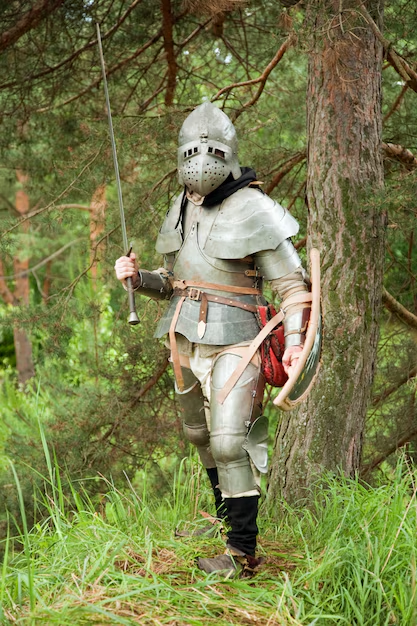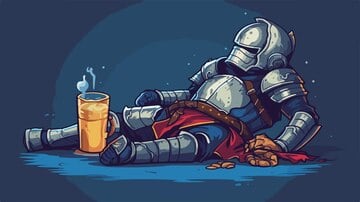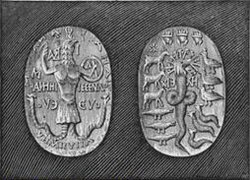We’ve all seen it — the “knight in shining armour.” Gleaming steel, noble pose, sword raised to heaven. But let’s be real: history has a nasty habit of polishing rust until it shines. Here’s the armour story, minus the romance.
Myth 1: Everyone wore armour back then.
Reality: Nope.
- A full suit of plate cost about as much as a house.
- Ordinary soldiers wore a padded jacket, maybe a helmet, maybe grandma’s old cooking pot.
- The “armoured knight” was the medieval version of a sports car — flashy, expensive, and owned by very few.
Myth 2: Armour made you a super soldier.
Reality: It made you sweaty.
- A harness weighed 20–30 kg. That’s like carrying a modern soldier’s rucksack, except you’re supposed to fight in it.
- Studies show it doubled your energy use just walking around.
- Only the very fit could handle it — and not every “noble peacock” was exactly boot-camp material.
Myth 3: Armour made you invincible.
Reality: Not if the other guy brought the right tools.
- Maces, warhammers, and longbows existed for one reason: smash the knight.
- Fighting manuals taught you how to trip a knight, pin him, and poke a dagger into the squishy bits.
- If you were knocked down and swarmed, no amount of polish was saving you.


Myth 4: Armour was all about battle.
Reality: Half the time, it was cosplay.
- Tournament armour was so bulky you could barely move outside the tilt yard.
- Parade armour was gilded, etched, and designed to impress princesses, not deflect arrows.
- By the 16th century, guns made armour pointless — but it lived on in parades and portraits like medieval Gucci.
⚡ The Bottom Line
Armour wasn’t useless — but it wasn’t the all-conquering miracle Hollywood sells us.
- It was expensive, so only elites had it.
- It was tiring, so only the strong could use it well.
- It was limited, so the rest of the army just got on with fighting in rags.
The knight in shining armour? Think less “battlefield hero” and more overheated rich guy in fancy metal pyjamas.
📚 How We Used the Trivium to Cut Through the Myth
The trivium (grammar → logic → rhetoric) is an old method of thinking that helps separate fact from fantasy.
- Grammar (facts): Armour was real, heavy, and costly. Most people didn’t have it.
- Logic (analysis): If it was rare, tiring, and beatable, it couldn’t be the miracle we imagine.
- Rhetoric (presentation): We bust the myth with a casual, comic blog post — serious truth, funny delivery.
Once you see it, you can use the same method to slice through all sorts of medieval myths.
🏰 More Medieval Myths Busted with the Trivium
Castles
- Grammar: Cold, drafty, smoky, full of fleas. Toilets were holes in the wall.
- Logic: If they were uncomfortable fortresses, not cozy homes, then fairy-tale castles are a myth.
- Rhetoric: Castles weren’t palaces — they were stone bunkers with bad plumbing.
Swords
- Grammar: Expensive, not the main battlefield weapon. Spears and bows did most of the work.
- Logic: If swords were rare and symbolic, they were about status, not fighting.
- Rhetoric: The sword wasn’t Excalibur — it was the medieval Rolex.
Chivalry
- Grammar: Knights often raided peasants, broke promises, and fought dirty.
- Logic: If behaviour didn’t match the “code,” chivalry was more story than reality.
- Rhetoric: Chivalry wasn’t a code — it was medieval PR.
Feasting
- Grammar: Most people ate bread, pottage, and ale. Banquets were rare and elite-only.
- Logic: If 95% of meals were gruel, constant feasting is a fantasy.
- Rhetoric: Forget the turkey legs — medieval dining was 95% porridge, 5% party.
Medicine
- Grammar: Bloodletting, charms, and prayers were common. Germ theory didn’t exist.
- Logic: If doctors didn’t understand infection, medicine was mostly guesswork.
- Rhetoric: Medieval medicine wasn’t healing — it was trial, error, and a dash of witchcraft.
Witch Trials
- Grammar: Thousands executed with little or no evidence, often from fear or politics.
- Logic: If the accusations came from paranoia, it wasn’t about justice.
- Rhetoric: Witch trials weren’t holy battles — they were medieval cancel culture with firewood.
Literacy & Learning
- Grammar: Most people couldn’t read; books were rare and expensive.
- Logic: If literacy was limited to monks and nobles, education was narrow.
- Rhetoric: Medieval learning wasn’t widespread — it was monks with manuscripts and everyone else with gossip.
Everyday Life
- Grammar: Harsh work, short lives, disease, and survival as the main concern.
- Logic: If life was mostly toil, the “merry peasant” is myth.
- Rhetoric: Medieval life wasn’t a festival — it was hard labour with a pint on the side.
✨ The Big Picture
The Middle Ages were real enough — but what we picture today is mostly romantic leftovers: knights in perfect armour, noble codes, endless feasts, and fairy-tale castles.
By using the trivium, we can peel back the shine:
- Facts give us the raw material.
- Logic shows what those facts really mean.
- Rhetoric delivers the truth in a way that sticks.
And when we do that, the “glorious medieval world” looks less like legend… and more like mud, porridge, and a very sweaty guy in plate armour.
Before saving, open your browser’s print dialog and turn off Headers and footers (the title and URL line).
Chrome / Opera / Edge: Menu → Print → uncheck Headers and footers • Firefox: More settings → turn off Print headers and footers • Safari: already clean


